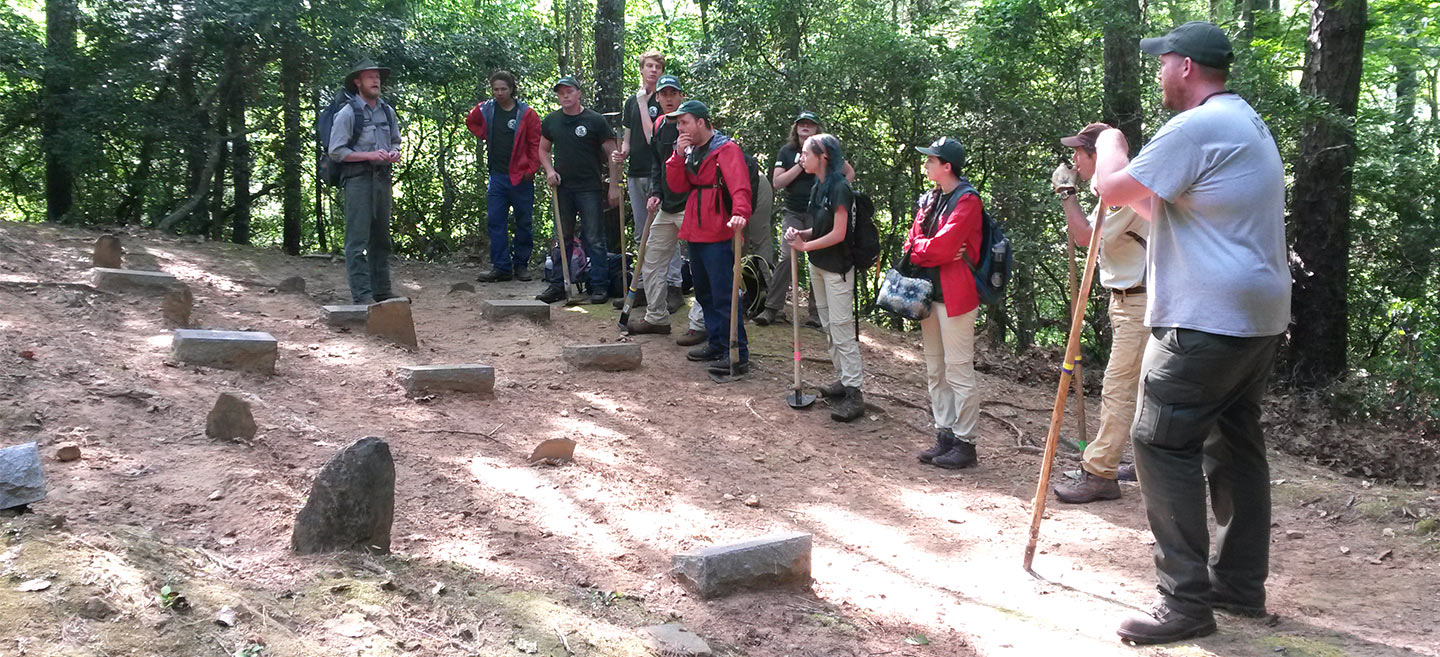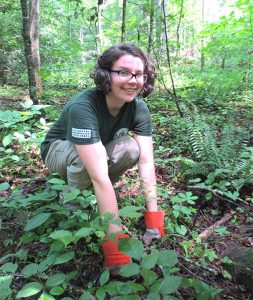
by Laura Booth
GSMNP Intern
Warren Wilson College student
Graduate of Swain County High School, Bryson, NC
As my internship in the Great Smoky Mountains National Park comes to an end, and I reflect back on all my experiences and tasks I have accomplished, one job clearly stands out — working with the National Park Service trail crew to maintain cemeteries in the park.
One of the earliest crews we worked with was the Barge crew on Fontana Lake. The Barge crew consists of four men who are in charge of maintaining the trails from 20 Mile to Chambers Creek.
Not only is the Barge crew in charge of the trail maintenance along the park side of Fontana Lake, but they are in charge of the cemeteries, too.
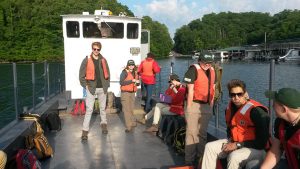
I am a local of Swain County, North Carolina, and have lived there all my life, but I had never heard of such a thing. I never knew that the National Park Service helped maintain these cemeteries in the Smokies.
The day we worked with the Barge crew, we set out for Hazel Creek on a barge boat. Hazel Creek is one of the most remote areas of the park, and the only way you can reach it is by boat or by hiking into the area.
After landing at the entrance, you then can hike up Hazel Creek trail. On cemetery Decoration Days, the NPS will drive family members in a vehicle to visit the cemeteries.
Preparing cemeteries for Decoration Day
Our job that day was to assist the Barge crew in preparation for a Decoration Day. Decoration Day is a day set aside every year for the family and loved ones to visit those buried in a cemetery in the park. Every park cemetery has a different Decoration Day.
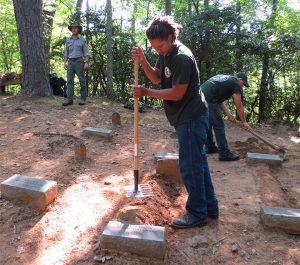
Our first stop was Bone Valley Cemetery, named not after those buried there, but for a herd of cattle that were left to die by their rancher after a rainstorm.
As burying practices go, back then they buried their loved ones high on the ridges and hill tops, leaving the fertile river valleys for farming and homesteading.
To prepare the cemetery for visitors, we mounded all the graves at Bone Valley, meaning that we followed the historical burial practice of scraping the dirt around the grave and mound it into a trapezoidal like pyramid, giving the grave a freshly buried look.
After completing our work at Bone Valley, we hiked to Hall Cabin and the Hall Cemetery. Again, we mounded those graves.
After we ate lunch, we hiked to the historical town of Proctor and the Proctor Cemetery, one of the oldest and largest in the Park. The interns picked up the old plastic flowers and also gathered any limbs and sticks in the way.
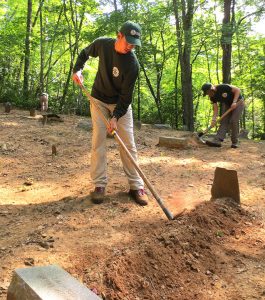
Historical gravesite and erosion
Looking around these cemeteries, one issue is prevalent and that is erosion. The risk of these historical gravesites eroding away is great.
When I shadowed the GSMNP archeologist, the issue of eroding gravesites came up. He said that one of the factors that cause the erosion is the grave mounding practice. When graves are mounded, the sediment is exposed to the elements.
The graves face east, towards the sunrise, while the long sides face north and south. When you have a mounded grave on a slope, issues will arise. After a hard rain for example, the north side the grave is flooded with water, while the south side is washed away.
As we were heading back to the marina on the barge, I reflected on how little I knew about the park. The Smokies are my home, my backyard, but I had no clue how much hard work there is with few hands to do all the work.
When talking about their work, the trail crew said maintaining the cemeteries is worth it to see how happy the families of those buried are about how the cemeteries look when they visit on Decoration Days.

This is the fourth in a series of blog posts by high school students participating in the Great Smoky Mountains National Park Summer Internship Program. This summer, 19 students are participating, representing high schools in North Carolina and Tennessee that are near the Great Smoky Mountains National Park.
The program is funded by both the Youth Partnership Program and Friends of the Smokies. FOTS has supported the program for 16 years, initially providing the salaries for the interns and now funding the program staff salaries.
The program is designed to give the interns a little taste of a variety of activities that rangers are involved with – from fisheries science to botany to forest and stream ecology. The interns gain an understanding of how the park is managed and are introduced to possible career opportunities.
In the first blog post, Hannah Ensley introduces the internship program.
In the second blog post, Nicole Welbourn explains how stream inventories are conducted.
In the third blog post, Matthew Sullivan talks about the training required for wildland firefighters.
